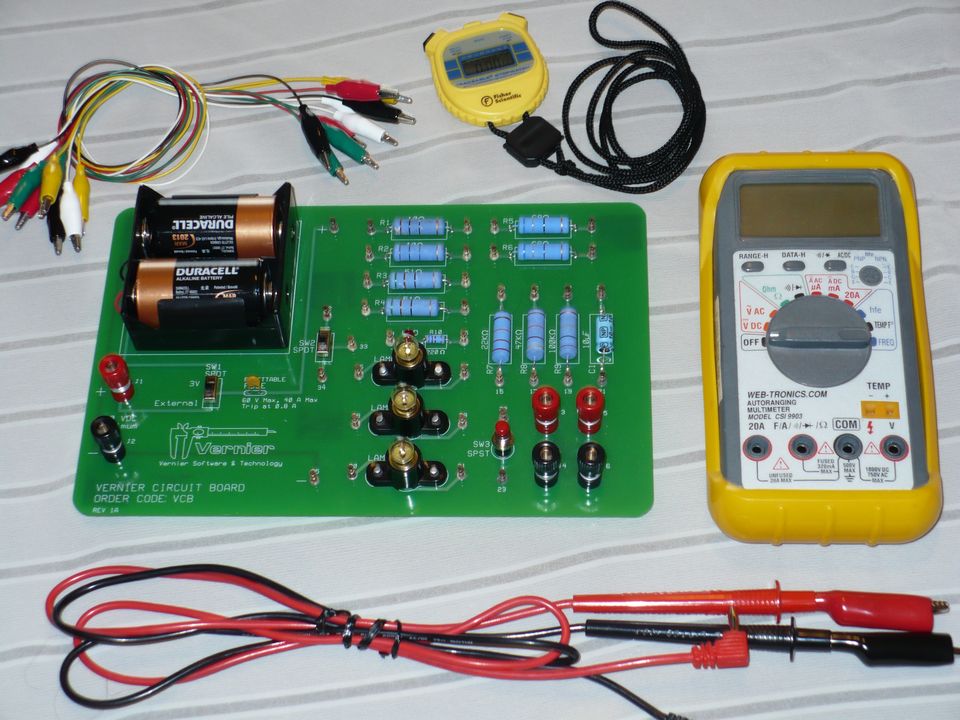Lab 6: Charging and Discharging of a Capacitor
Circuits involving batteries and resistors produce steady currents and voltages, which do not change with time. In many practical applications, time-dependent currents and voltages are desirable. The corresponding circuits normally involve the use of capacitors, which are devices that store electrical charge.
A capacitor goes through a transient period during the charging (or discharging) process. As a result, currents and voltages change gradually from their initial values when the circuit is closed to their final steady-state values when the capacitor is fully charged (or discharged). The length of the transient period depends on the size (or capacitance) of the capacitor and on the resistance that controls the current flow into or out of the capacitor.
Objectives
After completing this experiment, you should be able to
- describe the charging process of a capacitor.
- describe the discharging process of a capacitor.
- define the time constant of an RC circuit.
- construct a simple RC circuit.
Reading Assignment
Before starting this experiment, make sure you read
- sections 17-7 to 17-9 in the eText.
- sections 19-5 and 19-6 in the eText.
- the proposed theory to be tested in this experiment.
Equipment
The lab kit provides the main equipment required for this experiment: a large value resistor, Vernier circuit board, digital multimeter, and accessories.

Procedure
To perform this lab experiment, here is a suggested procedure.
Note that the pictures below use the original Vernier Circuit Board. It is possible that you received the more recent Vernier Circuit Board 2. The instructions in the procedure should apply to either version of the circuit board. If you require any clarification or assistance, please contact your tutor.
 |
 |
 |
 |
Picture 1 |
Picture 2 |
Picture 3 |
Picture 4 |
Analysis and Discussion
In this part of the lab, you will discuss the validity of the proposed theory based on your measurements and data collected. You have some freedom in choosing the appropriate method to analyze your data and to make your arguments. However, your analysis and discussion must be relevant, convincing, and conclusive. Where appropriate, support your writing with tables, graphs, diagrams, and detailed calculations.
Here are some guidelines for the analysis and discussion.
Questions
Answer the following questions in detail at the end of your lab report.
- Estimate the maximum energy stored in the capacitor in the circuit you built for this experiment.
- Based on your data, what is the value of the voltmeter’s internal resistance?
Prepare your lab report for this experiment and submit it for marking.